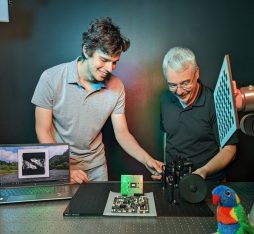- Restrictions on access to drinking water in certain regions of the world have underlined the importance of the early detection of faults in water treatment plants.
- Several teams are testing IoT based systems to monitor these facilities.
- Experiments that use network sensors and Wi-Fi or SMS notifications, which have been conducted in desalinization plants, are making an extensive contribution to productivity without adding to costs.
In the context of global warming and rising tensions over access to freshwater resources, the question of the productivity of water treatment plants has grown in importance. In certain regions of the world delays in responding to leaks, poorly adjusted systems, or breakdowns that affect the supply or quality of fresh water can no longer be tolerated. Several research projects are underway to test the real-time, remote monitoring of these facilities using IoT devices.
SMS notifications ensure faster response times
In 2021, Saudi researchers published an article in the journal Energies describing an autonomous solar-powered desalinization still. Within the prototype device, a series of networked sensors collected data on ambient temperature, water temperatures and water levels, the quantity of fresh water produced, and all this data was made available online via a dedicated mobile phone application. Users were provided with SMS notifications on levels in the desalinization basin and water tank to enable them to efficiently manage the production process and to respond in time in the event of problems.
Other projects presented in recent years have also used IoT devices for wastewater treatment, irrigation systems, the analysis of the quality of drinking water, and to build predictive models from automatically collected data (temperatures, pH, turbidity, etc) that optimize water production processes.
As a group of Indian experts in electronic engineering and computing recently pointed out in the journal Measurements: Sensors, “The major issues considered in the existing methods are less reliability, less robustness, high cost, slow response, and poor efficiency. But with the help of an efficient IoT device, most of the drawbacks can be eliminated.” The team was also working on the monitoring of a desalinization process using IoT sensors and SMS notifications, along the lines of the 2021 Saudi project.
Networked IoT devices that are widely dispersed and limited in capacity make use of unlimited virtual memory to store and analyse data.
Experiments in desalinization plants on the Aegean
The research team conducted extensive experiments in desalinization plants on the Aegean Sea to test the efficiency of their system, which made use of sensors to detect electrical faults and monitor pH (acidity) and turbidity (suspended matter content), along with water temperatures and levels. This data was collected by a NodeMCU open-source hardware and software IoT device and relayed via Wi-Fi to a server in the cloud, making it accessible to remote users. In the event of the failure of its Wi-Fi link, the system was also enabled to send all this information via the GSM module it used for SMS notifications. System alerts, which were also backed up by local links to plant control rooms, we’re automatically generated for breakdowns, inadequate water quality, and leaks. And to ensure that technicians could quickly locate the source of a problem, all the sensors were also located via GPS.
Super detailed supervision
The success of this research combining two different technologies highlights the potential for the super detailed supervision of complex systems. As the Indian researchers point out in their research paper, IoT and the cloud can be merged. “IoT devices are connected, widely scattered, and subject to limitations, however they can store and analyse their sensory information using virtually endless memory and processing capacity in the cloud […] expanding cloud computing’s reach to include practical applications.” The results of the programme surpassed those obtained in previous experiments, which notably relied on flying ad-hoc networks (FANETs) of drones. At one of the sites, for example, the team was able to explain variations in turbidity readings, which resulted from the oversaturation of suspended particles in a river supplying the desalinization plant at various times of the day. A deliberate release of salt into the system triggered an alarm as expected. And that’s not all, the system also fed data on this increase in salinity into a predictive model that issued notifications, with details of the time it would take for the salted water to arrive there, to other pumping stations, which in turn activated further local alerts to take preventive action. A cascade of information that effectively demonstrates the potential of IoT to provide super detailed supervision without incurring significant costs.







